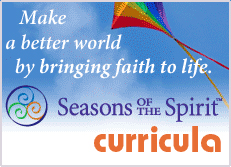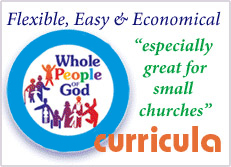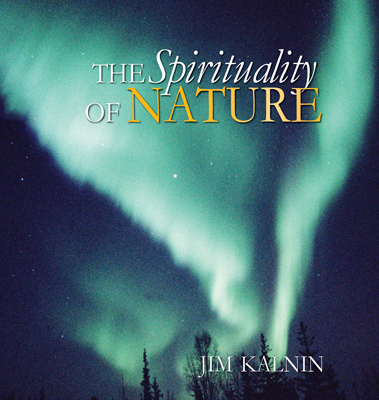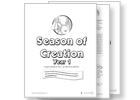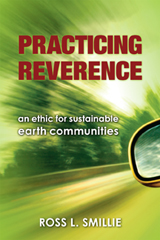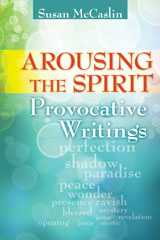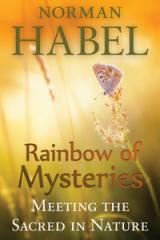
Rainbow of Mysteries
Meeting the Sacred in NatureNorman Habel
240 PP | 6" x 9"
Paper
ISBN: 978-1-77064-441-0
Have you ever wondered how you can connect with the sacred in nature, or whether there is anything sacred in nature? Is presence more than existence? Has the Christian tradition obscured the sacredness of nature? Is the Bible alive to the wonder of creation? How can we sustain a sense of mystery and an appreciation of the sacred in nature?
In the biblical Flood narrative, the rainbow was the sign of God’s covenant promise to never again to destroy the Earth with flood waters. The rainbow served to remind God of God’s own bond with Earth. “My rainbow,” says Habel, “represents my covenant promise to explore my bonds with Earth, my spiritual connections with creation.” Each colour represents an often-overlooked aspect of creation and inspires the reader to consider our place in nature.
Using poetry and prose, Norman Habel journeys deep into his personal experiences of the sacred in nature, from his initial sense of alienation from Earth to his eventual “homecoming.” Along the way, he investigates seven wonders of nature and their spiritual dimensions or mysteries. He explores biblical texts that praise or suppress creation and examines each mystery through the lens of ecology and his own experiences. Ultimately his goal is to discern how to sustain each mystery and its spiritual dimension.
The book includes a suggested workshop outline, and seven rites to explore mystery in nature.
Norman Habel, Author
Dr. Norman Habel hails from a farm community in Australia where he first met nature in a local bushland. He has led the move to include The Season of Creation as part of the church year. See seasonofcreation.com. Among other works, he has recently published An Inconvenient Text: Is a Green Reading of the Bible Possible? and the first volume in the new Earth Bible Commentary series, entitled The Birth, the Curse and the Greening of Earth.
Media Reviews
Australian theologian and author of Like Catching Water in a Net: Human Attempts to Describe the Divine and Stepping Out with the Sacred: Human Attempts to Engage the Divine
Dr. Val WebbAfter 60 years of scholarly biblical interpretation and ecological theology, Habel opens his heart and writes about his return to his original parent, Earth. Mourning centuries of Christian dualistic separation of earth and spirit that sought God “above” or “beyond,” and devalued Earth, Habel invites us to re-discover, re-taste, and re-embrace Earth as holy. This beautifully moving and lyrical memoir-reflection containing story, poetry, liturgy, and study guide is to be experienced and savoured.
Author of The Advance of Love: Reading the Bible with an Evolutionary Heart
Bruce SanguinThis book opened my heart, over and over again. Habel…was converted by ecology to a relationship with the living Earth that is pervaded by Mystery. It is tempting to call Habel an Earth mystic. But God is not hidden. A Presence shines out everywhere in the reds of the sunset to the orange clay of his beautiful homeland. I’m adding this book to my required reading list for all Christians who want to heal the historic and tragic separation of matter and spirit. Highly recommended.
Emeritus Professor of New Testament, Lutheran School of Theology at Chicago; Director, Lutherans Restoring Creation
David Rhoads
This wondrously poetic hymn of praise to creation, exuding the wisdom of eight amazing decades of life, comes straight from the heart of one of the most creative minds of our generation. Norman Habel opens scripture to the fullness of creation, acknowledges the faults of the Christian tradition, interprets the landscape through the lenses of mystery and ecology, draws upon his own rich experience of communion
with Earth, and sees with clear eyes the presence of Spirit in all of nature. Habel challenges some of our most basic assumptions about ourselves and our relationship with the rest of Earth. It is just what the doctor ordered for weary souls and tired Earth-keepers. I recommend this powerful little volume to every human Earth being!
Customer Reviews
Margaret MillerThis is a wonderful book. Norman Habel draws on a deep vein of biblical scholarship (he is an esteemed Hebrew Bible scholar), his interpretive work from The Earth Bible series, and his own personal experiences of nature. It is very rich on many levels (intellectual, imaginative, spiritual) as well as being a helpful and practical guide on how we might each develop our own ways to meet the sacred in nature. It warmed my heart to read this book. Highly recommended!
An excerpt from Chapter 2: The Mystery of Being Earth-Born: An Orange Mystery
In Genesis 1 we encounter another birth narrative – the birth of Earth! (Genesis 1:1–13) In the past, most scholars have interpreted this text as God bringing order out of chaos. A close reading of it, however, reveals Earth waiting in the waters, like an embryo in a primal womb ready to be born but as yet unformed. God, meanwhile, hovers above the waters like a midwife (Habel, 2011, chapter 2).
God then creates light so that Earth can be seen when she is born, and space in the skies above where Earth can appear. On the third day we enjoy the birth. God does not say, “Let there be Earth,” but rather, “Let the waters separate/burst so that the land may appear.” The land appears and God names the new baby Earth. God brings the baby to life by causing vegetation to emerge. Finally, God looks at baby Earth and says, “Very good” or “Wonder-full.”
The opening myth of Genesis is not simply about the creation of the natural world. It also tells of God relating to this world as something wonderful, a child to be loved. If Earth were to tell her story in her own words, it might go something like this.
I am Earth, Baby Earth
In the beginning, I was waiting deep in the primal waters, the primal womb. I was waiting in the darkness like an embryo waiting to be born. Above, God hovered over the waters, like a midwife.
Then God said, “Light. We need some light so that Earth can been seen.” And light entered the primal darkness.
Then God said, “Space. We need some space for Earth to appear.” So God placed a canopy over the waters with space below it.
Light! Space! Action!
Then God said, “Let the primal waters part and let the land waiting beneath appear.” Suddenly the waters burst and I came forth, a newborn child of God.
Do you know what God named me? Earth!
Yes, I am Baby Earth.
To demonstrate that I was alive and breathing, God said, “Let Earth bring forth vegetation, every kind of flora.” Soon I was really alive and green!
God looked at me, this new living being, this baby from the deep, and said, “Beautiful!”
These Scripture texts illustrate that there were ancient biblical traditions that recognised the mystery of birth both in the origin of Earth and in the emergence of Earth beings. Both Earth and Earth beings were viewed as having a spiritual dimension, an intimate connection with a God who birthed Earth from the primordial deep, and Earth beings from within Earth’s womb.
Being an Earth being in my tradition
In my experience, the Christian tradition downplayed and devalued the intimate connection of humans with Earth. The Earth dimension of my being was but matter, transitory, and frail – dust destined to return to dust.
Into this transitory piece of matter, I was told, God infused a spiritual core, a soul or spirit. (When and how God did this was never explained satisfactorily to me.) This spiritual core was understood to be eternal, that true inner me destined – if all went well – to a life with God in heaven. I was part temporal and part eternal, body and soul.
The problem I faced in my tradition was the belief that birth into the world was not clean. Not only were women, after giving birth, obliged to undergo a purification rite in church before they could attend Holy Communion, but the baby itself carried with it a hereditary element called sin, or more specifically, original sin.
This impediment was removed through the sacrament of Baptism. The water of baptism washes the baby clean and baby is “born” a second time. However, the full import of what this ritual meant for me became apparent after the following experience.
The baby cried a little, the celebrant proceeded with the rite of passage, and I smiled knowingly. I had heard the script of the Baptism ritual a hundred times before – the commission of Christ, the admonition to the godparents, and the welcome into God’s family. Suddenly, at age seventy, I heard a line from the liturgy as if for the first time: “You are being adopted into the family of God.”
Adopted! The words echoed in my mind. I was adopted, adopted into the church, into the family of God. God was my Father, my adoptive Father. Through baptism I was “born of water and the spirit.” So, my family was now a spiritual family, a spiritual home. I emerged from the waters of baptism as a child from its spiritual mother’s womb and was “born again.” In the language of the sacrament, my adoption was official in the eyes of the community. I was God’s child and my new family name was “Christian.” I was, in the words of a well-known hymn, “a child and heir of heaven.” I was no longer an Earth being.
Yes, I was adopted. But for the first time in my life I wondered, Who are my “biological” parents? From whom was I separated or removed in order to be adopted into this spiritual family? Who are my “birth parents”? Who? Not my human father and mother. They were also part of the family of God. From whom then was I separated? From whom was I taken, stolen, or rescued?
I felt rather guilty asking this question. After all, I was also a celebrant who had often performed Baptism, the “rite of adoption.” I should know! The urge to discover my lost parent or parents, however, compelled me to begin a new search. I began a journey that took me back to the texts of the Bible I thought I knew so well.
If the God of the church is my adoptive parent, my spiritual father, who is my original parent, my biological parent? Strange as it may seem, my studies in ecology began to make sense; they became more than academic exercises. They provided a personal perspective on my origins.
Is my biological parent Earth? Why not? Every part of me comes from Earth – the air, fire, water, minerals, and micro-organisms that my body comprises are all from Earth. They belong to an endless cycle of interconnected Earth components that have hung together in ever-changing patterns in my body for seventy years. I am an Earth-child, a dimension of my existence that I now need to explore and understand. Earth, it would seem, is my biological parent. I am an Earth being, not just a human being.
Nothing was ever said to me over the years about my biological parent. Earth was not publicly declared to be an unfit parent – or even a parent. In fact, Earth was conspicuous by her absence. Those who related to Earth spiritually were denounced as animists or worse. The church taught that as a human child, I was “conceived and born in sin” and therefore damned by God. My baptism and adoption rescued me from that verdict and incorporated me into a life-giving family. I was saved from my sinful biological origins. But what did that mean? Had I been rescued from Earth?
The belief of my church community that I was a sinful human child in need of rescue, in spite of my condition as an innocent newborn, was based primarily on a story in Genesis 3 and Saint Paul’s interpretation of that story in his letters to the Romans and Galatians. The so-called original sin of Adam and Eve was viewed as a primal force that rendered all babies corrupt by nature. I was born a corrupt Earth baby! Some members of my faith community argued that Earth was also corrupt as a result of the apparent fall of this primal couple into sin. A fallen creation accompanied a fallen humanity.
My church tradition largely ignored the reality that we are Earth beings, like other Earth beings, and focused on the belief that we, as human beings with souls, were superior and different from all other creatures. We were also told that some sciences, like psychology, verified this. Our kinship with the rest of nature was also countered by the doctrine of the imago Dei. This doctrine not only raises human status above other Earth creatures but also provides a mandate to dominate non-human Earth beings and subdue Mother Earth. Listen to the text:
So God made humans (adam) in his own image,
In the image of God, he made them;
male and female he created them.
Then God blessed them and said to them:
“Be fruitful and multiply; fill Earth and subdue it;
have dominion over the fish of the sea, over the birds of the air
and over every living thing that moves on Earth” (Genesis 1:27–28).
In spite of some efforts to soften this text, the verbs for have dominion/rule (rada) and subdue/crush (kabash) are harsh and overpowering. And this text has been used to justify human efforts to harness nature, exploit creation, and bring Earth under human control (Habel 2011, chapter 2).
In my Christian tradition I now identify a range of texts, teachings, and attitudes that reduce Earth to a disposable body of matter. They also imply that Earth was created for humans to inhabit, tame, and harness while en route to heaven. The option that Earth is the true mother of humans – body, mind, and consciousness – was rejected as a residue of pagan thought.
Being an Earth being in nature
After years of being conditioned to think of ourselves as superior beings, it is not that easy to come home to Earth and identify ourselves as Earth beings. Recent findings of ecology can help us. We belong, after all, to a fragile web of interconnected and interdependent forces on this planet.
The common origin of all life, including humans, is now widely recognised by biologists and ecologists. Humans are “born of Earth,” as David Suzuki and others write. The earth, air, fire, and water that have long been viewed as the elements of creation are all necessary for humans (and indeed the whole planet) to exist. As David Suzuki and Kathy Vanderlinden write,
Air, water, earth, and fire – these are the substances that support all life. Together with the sum total of that life, they maintain the planet, keep it fit for life. As we explore each element in turn, looking at its origins, its function on the planet and our intimate relationship with it, we will begin to understand our indissoluble connection with the centre. We are creatures of the Earth, and everything we learn about the Earth teaches us about ourselves (Suzuki, 1999, 38).
As Lloyd Geering points out, there is, however, a latent consistency between the myth about the creation of Adam and the findings of ecology. We are indeed formed of the dust of the ground and will return to dust in death. For as Geering says,
The biblical proposition that we are made of Earth remains basically unchanged (in ecology), though of course we are now more sophisticated and know that the “dust” we are made of consists chiefly of atoms of carbon, hydrogen, nitrogen, and oxygen. And whereas the biblical myth pictured God forming us much as a child makes mudpies, we are now aware of the complex nature of human physiology. The lifeless atoms of which we are composed are united in the most intricate designs to form the myriad of life cells and the many internal organs that constitute the human organism (2009, 116–17).
The mystery of this human organism ought not to be ignored. In ecological terms we are Earth beings mysteriously interconnected with the soil, the environment, and the atmosphere that surrounds us (in biblical terms, the ground, the garden, and the breath from God). Or as Lloyd Geering suggests,
The biblical myth acknowledges this new ecological insight as well. After the fashioning of the body from dust, says the Bible, God breathed his breath into it. Since Hebrew uses the same word to mean breath, spirit, wind, and air, we can translate the ancient myth into modern terminology by saying that though we humans are made of the same elements as are found in the ground beneath our feet, we come alive and stay alive only if supported by the correct atmosphere. Indeed, we cannot live more than about two minutes without breathing it (2009, 117).
While the primal myth of Genesis 2 may suggest a latent consistency with the findings of ecology, the Christian tradition I know did not discern that connection. The Earth part of our being was viewed as sinful and secondary. We saw ourselves, in the last analysis, as spiritual beings, trapped in a body but destined for heaven.
Ecology makes it clear that we are born of Earth, nurtured by Earth, and received back into Earth in death. We are Earth beings, and Earth is our Mother. Every one of us is composed of the various elements of Earth, the very matter that this planet comprises. An awareness of this ecological mystery has long been recognised by indigenous people such as the Dakota. Luther Standing Bear once said,
Dakota children understand that they are of the soil and the soil of us, that we have the birds and beasts that grow with us, on soil. A bond exists between all things because they all drink the same water and breathe the same air (Suzuki, 1999, 52).
Birth is the mystery of endless expressions of life emerging from Earth. Earth is a massive womb from which an unlimited diversity of Earth beings are born. Humans are but one such child of Earth. And I am but one such Earth baby.
Earth too was born. Astral scientists tell us that Earth is a piece of stardust, a minute fragment of galactic matter spinning through space. Earth is but one of millions of planets that circle suns and reflect their light. Apparently Earth was born mysteriously long, long ago, somewhere in space – so the scientists say – with a big bang! I do not know precisely how my biological parent was born and matured, but I am fascinated by the way the mysterious beginnings of Earth are intuitively imagined by human beings. We have, it seems, a deep yearning to know about the origins of our parent as well as ourselves, a deep yearning that I now designate as spiritual.


